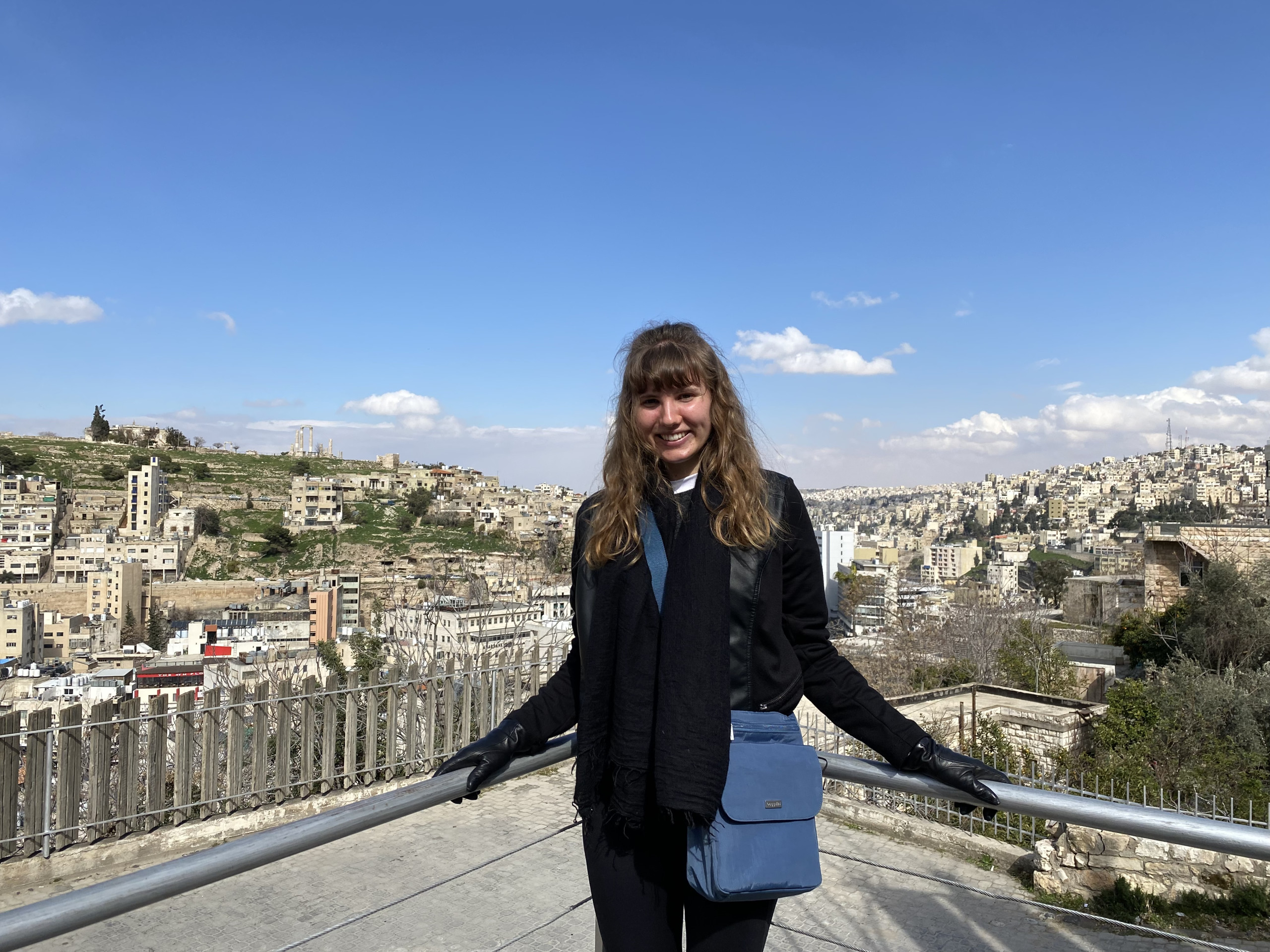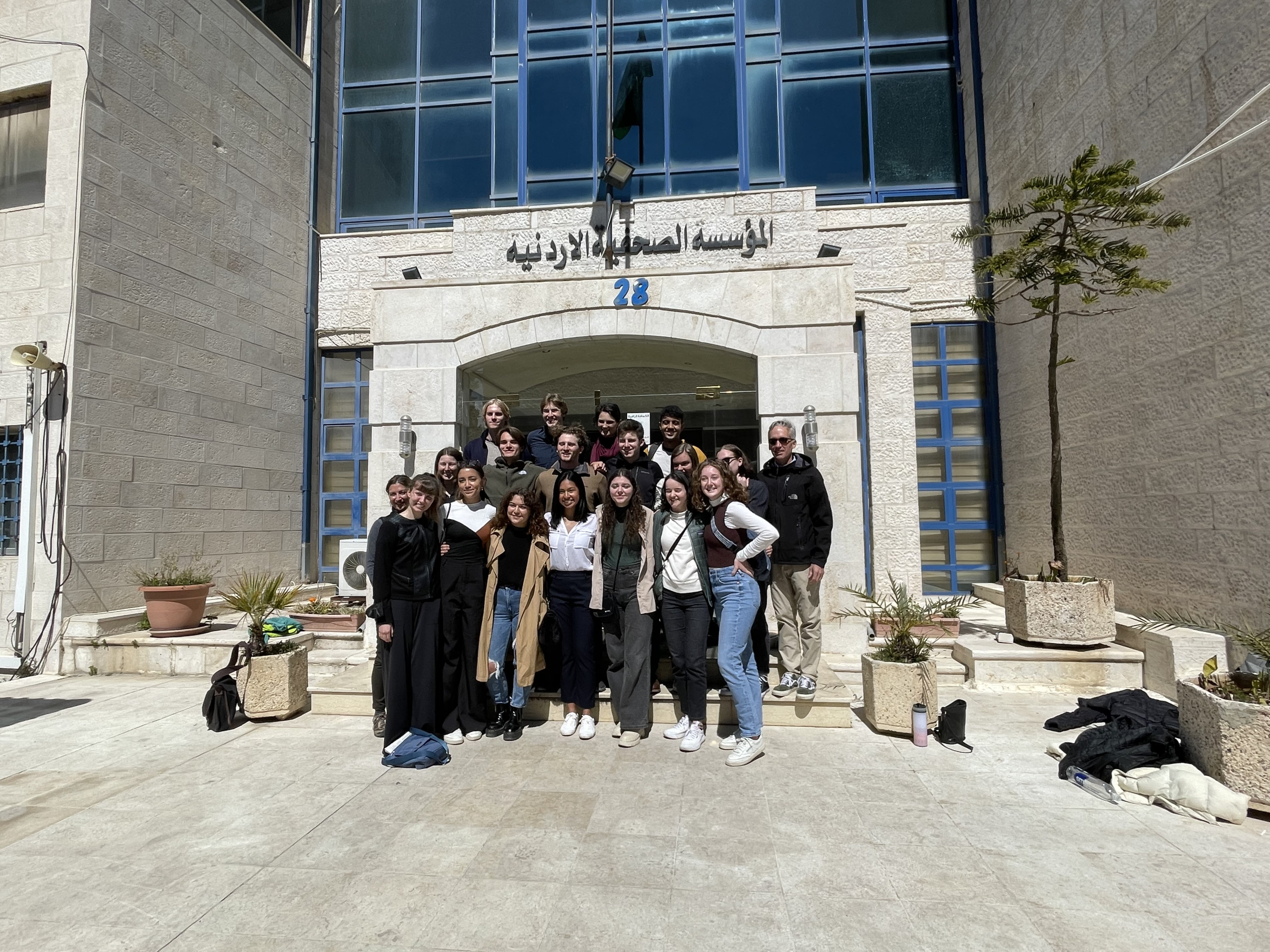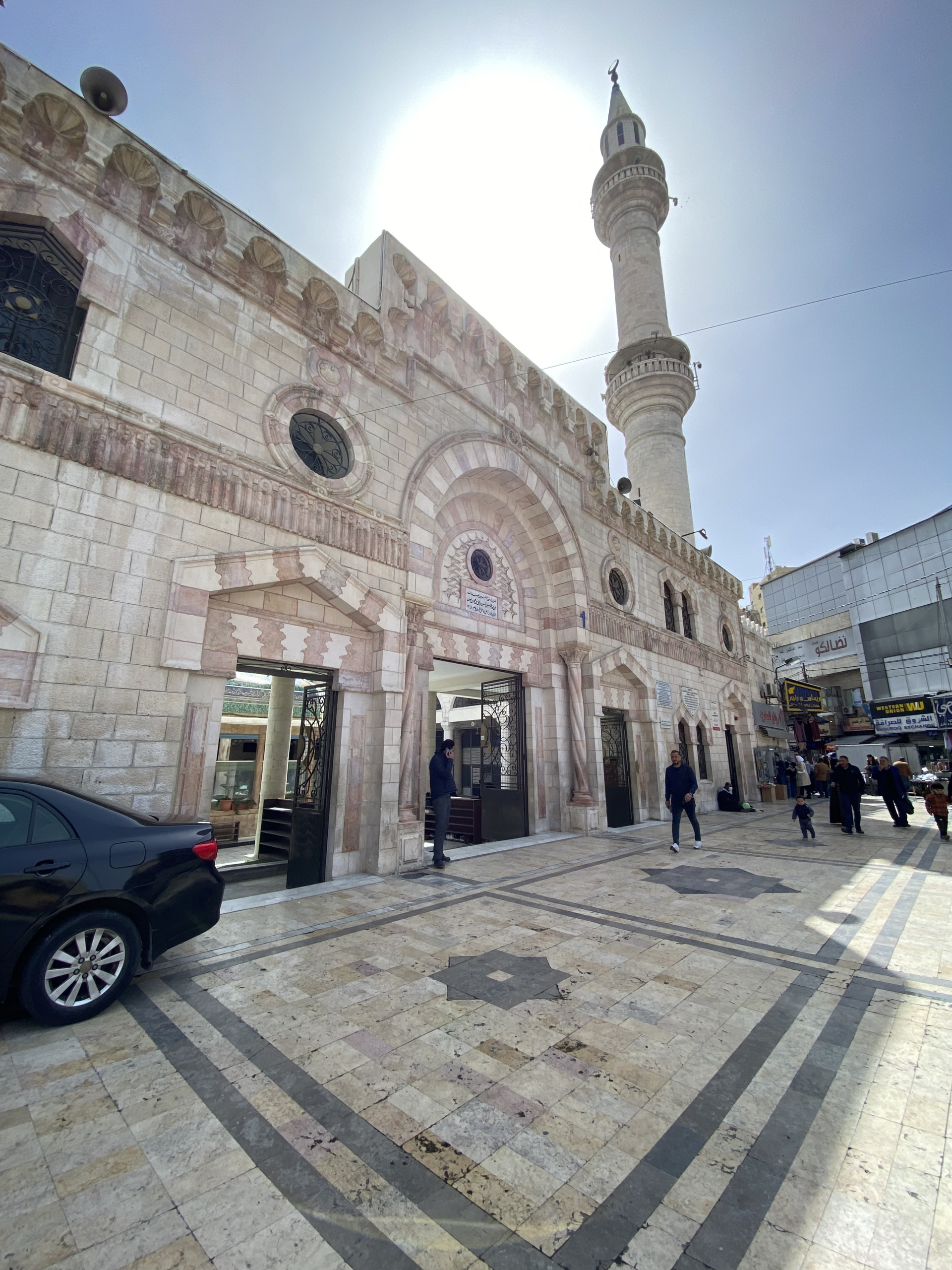Our Journey in Jordan
After nearly two days of intense, transatlantic air travel from Miami International (MIA) to London Heathrow (LHR) to Queen Alia International (AMM), we arrived safely in Amman, Jordan on Friday, March 11th. I couldn’t have been more excited to venture into the Arabic World for the first time in my life. Immediately, we were immersed in a new environment with distinct differences from the Western world; a culture, for example, deeply informed by religion influenced the way society was dressed. Modest, loose, dark fabric covered some of the women in the airport from head to toe, leaving everything veiled except for their eyes. Living in COVID times, I have learned to embrace face masks, but seeing this expression of masking was new to me. I’d like to think that COVID has brought me closer to understanding this traditional lived experience, because in order to recognize someone wearing a mask, you have to familiarize yourself with their eyes. However, eye contact was another difference I picked up on.
In Jordan, eye contact is brief and often avoided, especially for women. Direct looks are seen as confrontational or warranting of attention. Instead of making eye contact with passerbys, I looked up at the signs and advertisements in the airport. They were written in beautiful Arabic calligraphy, which unfortunately I couldn’t understand at all. To me, it looked more like art than discernible letters. As I picked up my luggage and headed for the arrivals, I wondered to myself what other differences I would encounter throughout our time here and, most importantly, what those differences would teach me about my surroundings and myself.

Our first friend we met along our journey in Jordan was Ahmad AbuShaikha, CET Resident Director and Student Life Coordinator. Ahmad helped guide us from the airport to our first stop (and home for the next five weeks), the Jawharet Al Sweifieh Hotel Apartments. At Sweifieh, we enjoyed a much needed night’s rest from the exhaustion of our travels. I have never been more grateful for the comfort of sleeping in a real bed! In the morning, Ahmad and his CET colleague, Mazen, treated us to breakfast at the study abroad center followed by a detailed orientation of our program. We learned about our hosts, our community, our role within the community, and the amazing adventures we would all share together–including cultural activities and excursions to Petra, Wadi Rum, Dead Sea, Jordan Valley, Mt. Nebo Baptism Site, Aljun Castle, and Jerash; an introductory Arabic class; and our core academic interest, a course on Culture, Politics, and Religion in Arab Theater.
Ahmad also introduced the history of Jordan so we would better understand the context of our program. He informed us of the monarchy, religion and politics, and Jordan’s geographic location positioned quite literally between “a rock and a hard place.” Jordan is neighbored by countries with tragic, ongoing political war and suffering (i.e., related to wars in Iraq, Syria, the Palestinian/Israeli conflict). Despite the region’s turbulence, Ahmad encouraged us not to worry. I was relieved to hear that our biggest safety concern would be “a Jordanian behind the steering wheel,” rather than something extreme like war or terrorism. The safety and security of Jordan can largely be attributed to the stable leadership and governance of the monarchy, Ahmad said.

My historical and political awareness of Jordan was further strengthened after a class visit with Mohammad Ghazal, editor in chief of the Jordan Times on March 16th for our course Media, Democracy, and the Global Village. Founded in 1975, the Jordan Times is the top-ranked, professional English daily newspaper in the region. Arabic-only content can be found on Al Ra’i, the Jordan Times sister paper (both owned by The Jordan Press Foundation). Ghazal informed us that the Jordan Times staff includes writers of Jordanian, Arab, and International backgrounds who contribute content for a global audience. He spoke passionately about the intricacies of language and reporting. Although the paper is published in English, Ghazal emphasized the importance of reporters who exhibit Arabic knowledge because they are cued into cultural nuances that might otherwise be missed.
For example, Ghazal reflected on an assignment where a Syrian family agreed to be interviewed by him and his colleague. As he observed, because the family was ashamed of their living accommodations, they felt more comfortable being interviewed outside. Expecting that this might be the case and picking up on their non-verbal clues, Ghazal suggested this to the family, which instantly relieved them. If this cultural preference was missed, the story would not have achieved the same goals. We learned that trust, rapport, and mutual understanding are essential in laying the foundation for the best storytelling.
I found Ghazal’s anecdote highly relevant to our class. As American college students navigating through Jordan with limited Arabic and lived cultural experiences in the Arab world, we have to demonstrate a heightened level of awareness to our new surroundings. Our “street smarts” are still developing. Entering the Grand Husseini Mosque in downtown Amman was a prime example of this for me. Women and men were required to enter the Mosque separately to pray. I had covered my hair with a scarf and was ready to go in when the woman at the door stopped me and pointed at my feet. I felt embarrassed as I began to enter the Mosque with shoes on. I had clearly missed the cue where everyone was taking them off. Realizing that I had messed up, I wasn’t sure if I would be allowed to enter again. Calmly, I took them off, started over, and I was graciously accepted. This experience taught me that making cultural mistakes is okay–in fact, they are expected–as long as we learn from them. However, the growth comes from how we observe our behavior and change. Next time I will indeed be more careful.

You must be logged in to post a comment.